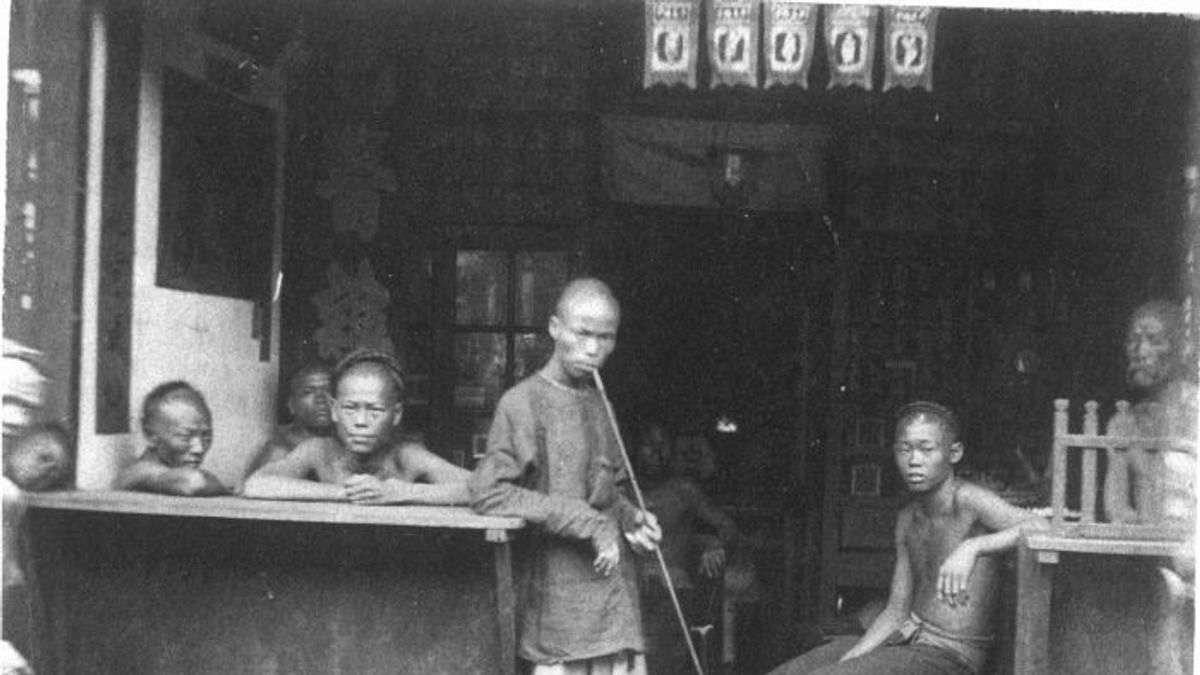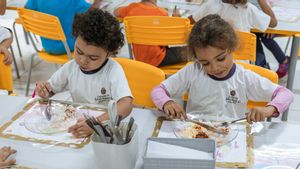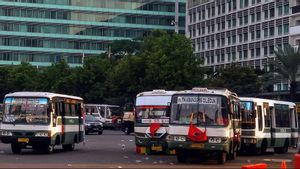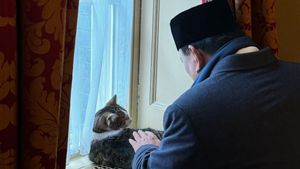JAKARTA - The existence of the Dutch trading partnership, the VOC in the archipelago, however, was the contribution of the Chinese ethnicity. VOC Governor General (1619-1623 and 1627-1629) Jan Pieterszoon Coen has acknowledged this. Since the VOC conquered Jayakarta and turned it into Batavia in 1619, he has always referred to ethnic Chinese as the pulse of commerce in a country nicknamed the Queen of the East.
However, along with the decline in VOC income which was unable to compete with the British trading partner, East India Company (EIC) in the 17th century, the Dutch, which initially considered the Chinese to always be profitable, slowly perceived them as a threat. As a result, the owners of the policy began to revoke all forms of privilege that became the origin of the Chinese rebellion in 1740.
An extraordinary uprising, which in a few days turned into a bloody massacre of over ten thousand Chinese people. This bloody act that resembled genocide - ethnic cleansing - was later known as the "chinezenmoord" or the killing of Chinese people. Even so, people in Batavia generally recognized the event as "Geger Pacinan" or "Tragedi Angke".
As revealed by Adolf Heuken in the book Historical Places in Jakarta (2007), the rebellion was triggered by the large number of junks (ships) which in addition to carrying salable crockery goods on the market from China, in fact also carried other cargoes, namely Chinese immigrants. For the colonial government, these immigrants were considered a disturbance of stability in Batavia.
“... Because it is impossible for them to find work in or around Batavia. "Because, since the 1720s, the sugar market was shaky, so many immigrants who worked in sugar cane mills were fired and unemployed," wrote Adolf.
These conditions make policy owners act. At that time, the Company began to limit the number of Chinese in Batavia by imposing a quota and residence permit system. However, the new rules did not help. Many of the VOC officials even looked for opportunities in a tight spot. These officials took advantage of the momentum by getting around the quota system.
As a result, immigrants from China began to disturb the peace of the Dutch-controlled areas by robbing Ommelanden - an area outside Batavia. So, then the member of the Dutch East Indies Council, Gustaaf Willem baron van Imhoff, took action. Van Imhoff proposed to the Governor-General of the VOC Adriaan Valckenier (1737-1741) that all Chinese people be forced to have and renew their permissie briefje or permit.
Likewise, all unemployed Chinese who were found without a permit would be arrested and then deported to Sri Lanka or South Africa, which was under VOC control. There, they were employed on plantations. Then, rumors spread among the Chinese that the Company was secretly throwing the poor person off the ship in the middle of the ocean.
"The Company has a record of bad activities. But of course he never committed, even imagined, no such crime. However, there were Chinese people who became desperate. So that armed groups gathered around the city planned to join their revolt. However, the restlessness of the Dutch population can be imagined. And the government rightly decided to order the search for weapons among all Chinese, "said Bernard HM Vlekke in the book Nusantara (1961).
Resistance ensued. On October 7, 1740, hundreds of ethnic Chinese attacked the sugar factories and VOC security posts scattered in various regions. This action angered the Company because its soldiers were more victims than the Chinese, who were previously underestimated because they did not have the courage to fight back.
However, the Chinese rebellion did not seem optimal. At that time the weapons of the rebellious Chinese were only modest. Such as a number of flintlock rifles, machetes, bamboo sharpens and several cannons made of wood and only a little iron. As a result, the rebels did not have the opportunity to approach Batavia City.
Dutch counterattackAfter two days, on October 9, 1740, VOC soldiers began to resolve the situation and began to turn to chase the rebels. It seems that the situation has been aggravated by the burning of the Chinese people's homes. Instantly, the Company lost control by starting to call for massacres of Chinese.
Sailors, soldiers, Dutch citizens, European citizens, and Indonesian slaves took to the streets to find and kill one by one the Chinese they met. In fact, the government seems to position itself as if it is helpless or on purpose does not want to stop the mass murder.
GB Schwarzen reveals a detailed description of the chaos in the book Reise in Oost-Indien (1751). He wrote about his experience of being trapped in the upheaval of the Pacinan which made Chinese people afraid because they were being hunted by the colonial government. Because, once a Chinese person was seen by VOC soldiers, no matter men, women or children, all of them were immediately killed.
One of the locations for his massacre was scattered everywhere, starting in Angke, in front of the Red Shop, to Gedong Bicara (Stadhuis: City Hall). "In the city hall - the current Jakarta History Museum - there are two hundred prisoners. To save bullets, they were all stabbed to death," wrote GB Schwarzen.
"On the 13th, all the burning stopped and there was not a Chinese person in sight in the city. All the streets and alleys were full of corpses, sometimes covered with corpses so that people could cross over the bodies without getting their feet wet."
In line with Schwarzen, the rioting of the pacinan in Batavia was also recorded by Iksana Banu in her short story entitled Bintang Jatuh (2012). In part of his short story, Iksana wrote about the panic of the Chinese people who at that time were afraid because they were being hunted by the colonial government.
“The Dutch, more than a hundred in number, along with the sailors and native coolies, ran behind the big crowd of Chinese people. No, not running hand in hand. They hunt, like a herd of mountain lions herding a herd of bison across the prairie, "Iksaka wrote.
“In a matter of minutes, on either side of the road, in the gutters, and especially in the river, the bodies were crammed with pale yellow bodies. Shattered, "he added.
Iksana deliberately wrote this so people would know how cruel the Dutch were to massacre innocent Chinese ethnicities. On this basis, the Chinese called Thomas Stamford Raffles in his masterpiece The History of Java (1817), as a driving force for the pulse of commerce in Batavia, began to decline in population.
"Although the numbers are still large, but according to calculations, their numbers have decreased considerably since the civil war of 1740-1743, in which not only were large numbers of Chinese people massacred by the Dutch government in the city of Batavia, but war against them was also waged all over the island, "Closed Raffles.
The English, Chinese, Japanese, Arabic, and French versions are automatically generated by the AI. So there may still be inaccuracies in translating, please always see Indonesian as our main language. (system supported by DigitalSiber.id)










